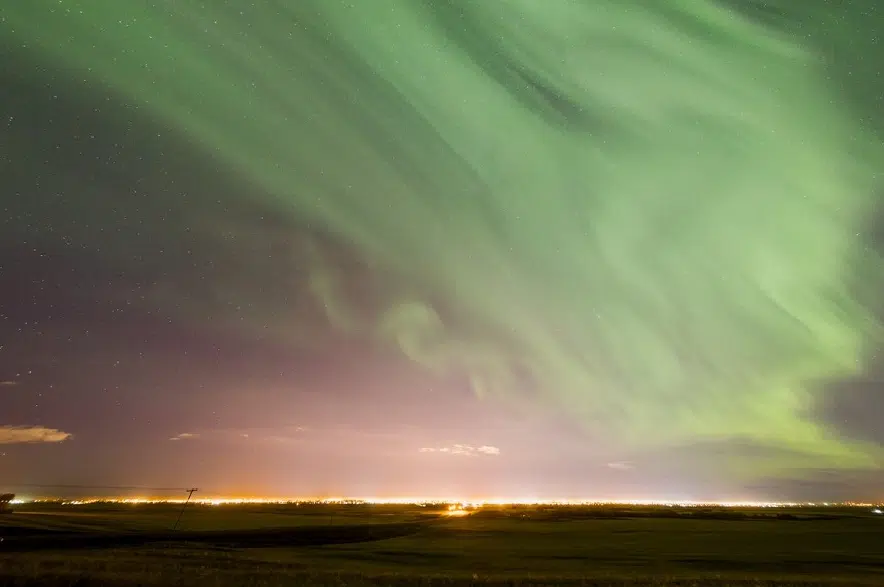If you’re hoping to catch a glimpse of the aurora borealis, now is the best time as the dancing lights are most prominent in September and October.
Samantha Lawler, an associate professor of astronomy at the University of Regina, said the period close to the fall equinox – which happened on Saturday – is the best time of year to see the northern lights. This is because of the orientation of the Earth and sun’s magnetic fields.
“It’s also extra good because the nights are starting to get longer, and it’s not super cold yet,” Lawler said.
So how do the northern lights happen?
“You get really great light shows when there are storms on the sun, and storms are more likely when the sun is close to solar maximum, which it is right now,” Lawler explained, adding that it’s an 11-year cycle of activity, which will be at its peak next year.
“The sun is always sort of spraying these little tiny particles out into space; this is called the solar wind,” the astronomer explained. “Every once in a while, the sun has storms on the surface where it ejects a whole bunch of particles all at once.”
When that happens, sometimes those particles are directed towards Earth, and the colours that you see in the night sky are the atoms in our upper atmosphere getting excited by being slammed into by these high-energy particles from the sun, Lawler added.

Ethan Holben looks through the University of Saskatchewan observatory telescope during a partial solar eclipse. (650 CKOM file photo)
The northern lights are most likely to happen close to the north and south poles, but a good storm can push the lights farther away from them. Lawler said the lights have been visible across Saskatchewan in recent weeks.
“From outside Regina, I could see the auroras directly above my head, which means that people quite a ways to the south could see them,” she said. “I read that someone in Nebraska saw that same light show.”
Lawler said sky-watchers are more likely to see the northern lights in the northern parts of Saskatchewan, but at this time of year the displays can be seen pretty frequently, even in the southern parts of the province.
The astronomer said that northern lights are not like weather and can be very difficult to predict, but it’s possible to monitor if solar storms are coming through websites such as spaceweather.com.
Those who live in a city might have a harder time spotting the aurora because of the light pollution, and Lawler suggested travelling north out of the city to avoid it.
Lawler said sky-watchers are also getting excited about a solar eclipse, which is expected on Oct. 14. She said the peak of the eclipse will be around noon.
Although it won’t be a total solar eclipse, southern Saskatchewan will see up to 60 per cent of the sun covered by the moon, she explained.
Lawler advised against looking directly at the sun during the solar eclipse, and said putting a pinhole projection onto the ground with a piece of cardboard can allow for safe viewing.











